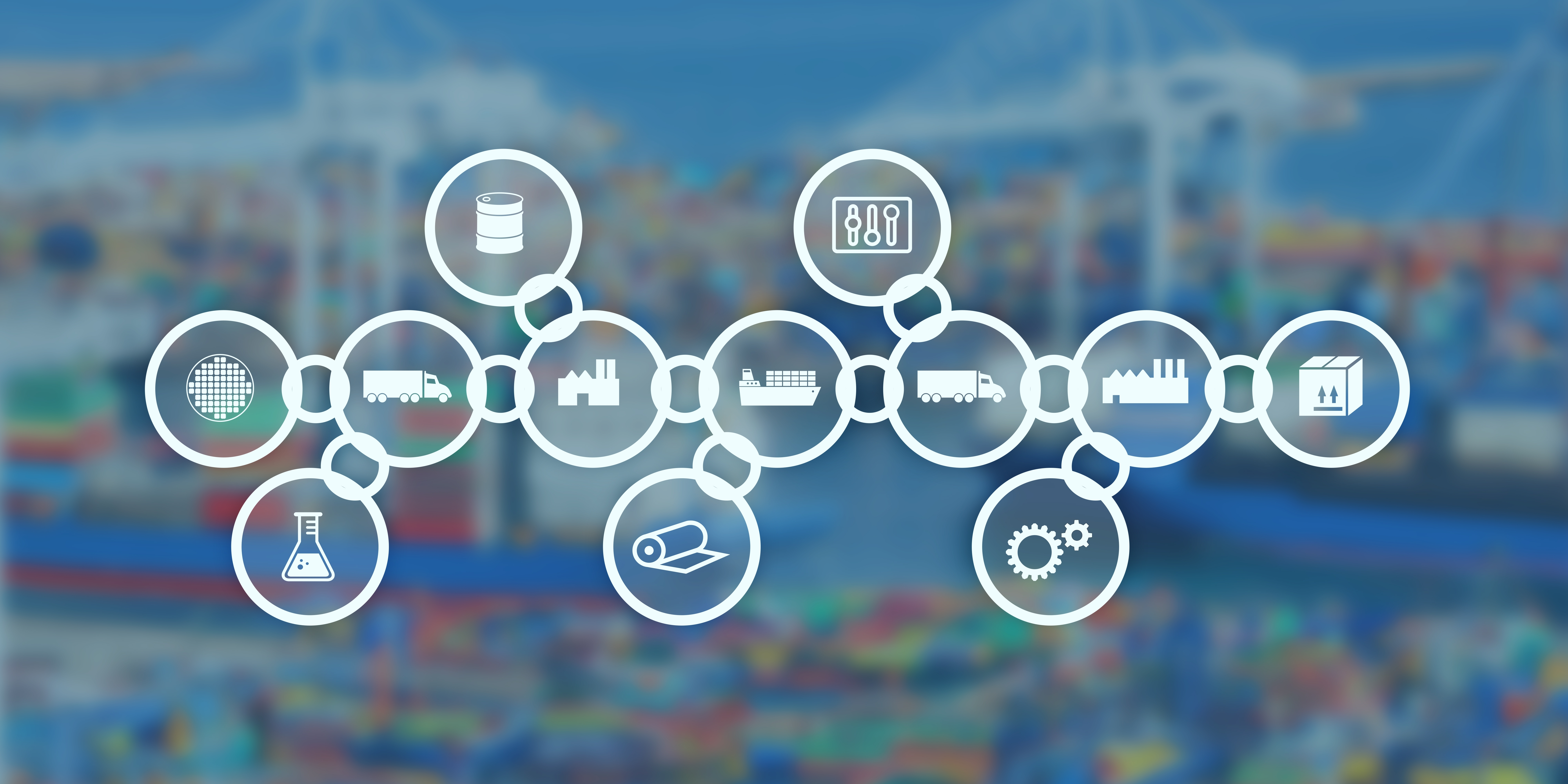Think of a chemical supply chain as the path raw ingredients take before becoming the crucial components that keep entire industries running. It’s a bit more than logistics—it’s the behind-the-scenes system that ensures manufacturers get what they need, when they need it, without hiccups.
For firms in sectors like pharmaceuticals, paint or advanced textiles, the stakes are pretty high. Quality, timing and compliance all hinge on this chain. And with increasing pressure to hit eco-targets, understanding how everything fits together—especially around sustainability in chemical production—has never mattered more.
Key Components of the Chemical Supply Chain
Raw Material Sourcing
Sourcing raw materials is usually the first and most unpredictable step in any chemical supply chain. The balance is tricky—buyers want quality, stability and price all at once. The trouble is, market volatility, supplier reliability, and shifting global regulations tend to get in the way. That’s why solid chemical supply chain management often starts with building long-term relationships and having backup suppliers lined up.
More or less, success here hinges on flexibility, detailed supplier vetting, and a decent grasp of regulatory shifts affecting the raw material sourcing process.
Manufacturing and Production
Once materials are in hand, the focus shifts to manufacturing logistics—turning base chemicals into usable products at scale. This part isn’t just about process control, though that plays a big role. It’s also about energy use, safety compliance and minimising waste.
Every decision here, from batch sizing to cleaning routines, affects overall efficiency and cost. Firms that treat this stage as a black box usually run into trouble. Instead, smart chemical supply chain management keeps production agile and well-documented, because the fewer surprises, the better.
Storage and Warehousing
Chemicals don’t sit quietly on a shelf—they react, degrade, or become hazardous if not stored right. That’s why proper warehousing isn’t just storage; it’s active risk management. Temperature control, segregation of materials, ventilation—all of it matters. There’s a lot riding on safe practices here, from avoiding accidents to staying within legal boundaries.
And with pressure building on companies to run a more sustainable supply chain, warehousing is often where simple tweaks, like smarter energy use or reducing packaging waste, can really start to show impact.
Distribution and Logistics
Getting chemicals from A to B isn’t just a delivery run—it’s the point where timing, safety and cost collide. Whether it’s flammable solvents or temperature-sensitive compounds, managing transport is a logistical puzzle. Good planning means fewer delays, safer handling, and lower emissions.
Still, supply chain disruption management plays a big role here—strikes, road closures, or global events can throw plans off without warning. So, the smarter approach tends to be flexible routing, digital tracking, and strong communication with logistics partners. It’s rarely simple, but it’s absolutely worth the effort.
End-User Industries
From pharmaceuticals to paint, and textiles to construction, the chemical supply chain feeds into industries that touch almost every aspect of modern life. Each of these sectors brings its own quirks. In pharma, traceability is non-negotiable.
In textiles, batch consistency can make or break a run. And in construction, timelines are king. That’s why supply chain challenges often look a bit different depending on where the chemicals end up. Still, what these sectors all share is the need for reliability, safety, and a bit of agility to adapt as demands shift.
Challenges in the Chemical Supply Chain

Regulatory Compliance and Safety Standards
Chemical supply chains don’t get a free pass—regulations are everywhere, and ignoring them can grind everything to a halt. From REACH in Europe to OSHA in the US, compliance shapes how chemicals are stored, transported, and labelled.
But it’s not just about ticking boxes. It’s about protecting people, staying in business, and keeping reputations intact. The best setups build compliance into every stage, right from raw material sourcing, so it doesn’t become a last-minute panic when audits come knocking.
Supply Chain Disruptions and Risks
Things go wrong. Ships get stuck, suppliers go bust, borders tighten overnight. It’s all part of the deal in chemical supply chain management. Disruptions can be small, like a late delivery, or major, such as geopolitical tensions or natural disasters halting production.
Either way, the knock-on effects can be brutal. That’s why supply chain disruption management isn’t a bonus—it’s standard practice. Regular risk assessments, alternative supplier lists, and clear contingency plans are the basics. Businesses that prepare for the worst tend to bounce back faster and lose less when things wobble.
Environmental and Sustainability Concerns
Running a sustainable supply chain isn’t just for press releases anymore—it’s starting to shape buying decisions and investment choices. But balancing environmental goals with production demands can get messy. Chemical handling, waste disposal, and carbon emissions all raise tricky questions.
Still, companies that take this seriously often find savings in energy use, smarter packaging, or local sourcing. It’s not always glamorous, but inch-by-inch, these choices add up—especially when the pressure’s on to meet stricter environmental targets without breaking budgets.
Technological and Digital Transformation
Digital transformation in supply chain operations is, more or less, turning from ‘nice to have’ into the norm. Real-time tracking, automated inventory checks, predictive analytics—they’re all changing how decisions get made.
For chemical supply chains, that means fewer delays, tighter quality control, and faster responses when problems crop up. The tech isn’t always fancy, but when it’s used right, it frees people up to focus on the bigger picture—like improving margins or cutting emissions—without chasing spreadsheets all day.
Best Practices for Managing a Chemical Supply Chain
Running a chemical supply chain smoothly doesn’t hinge on one big fix—it’s usually a bunch of small, practical habits that keep things steady. For starters, visibility is everything. Knowing exactly where your materials are, who’s handling them, and what condition they’re in makes a huge difference.
Some firms are leaning on supplier scorecards or digital dashboards to stay in the loop.
Take, for example, a manufacturer that switched from quarterly reviews to monthly check-ins with its raw material suppliers. That one change flagged issues earlier and helped avoid a costly shutdown. Others are tightening internal handovers between warehousing and logistics, just to shave off delays caused by crossed wires.
In short, solid chemical supply chain management isn’t flashy. It’s consistent. And the businesses that treat it as a team effort—right across procurement, production, and transport—tend to be the ones still standing when things get rough.
Future Trends in the Chemical Supply Chain
What’s coming next? Quite a bit, actually. AI and automation are creeping into every part of the chemical supply chain—from predicting stock levels to optimising transport routes in real time. These tools are cutting down on human error and trimming costs without needing massive system overhauls.
Then there’s blockchain, which might sound like overkill, but it’s showing promise for traceability, especially for compliance-heavy sectors.
If a batch of raw materials changes hands five times, knowing exactly who touched it, when, and why could become non-negotiable.
Another shift? More local sourcing to avoid overseas hiccups and reduce emissions. It’s not always cheaper upfront, but it often leads to more dependable results. And for companies rethinking their strategy or supply partnerships, it could be worth starting a conversation—contact us to find out how The Rakem Group approaches long-term supply solutions.
